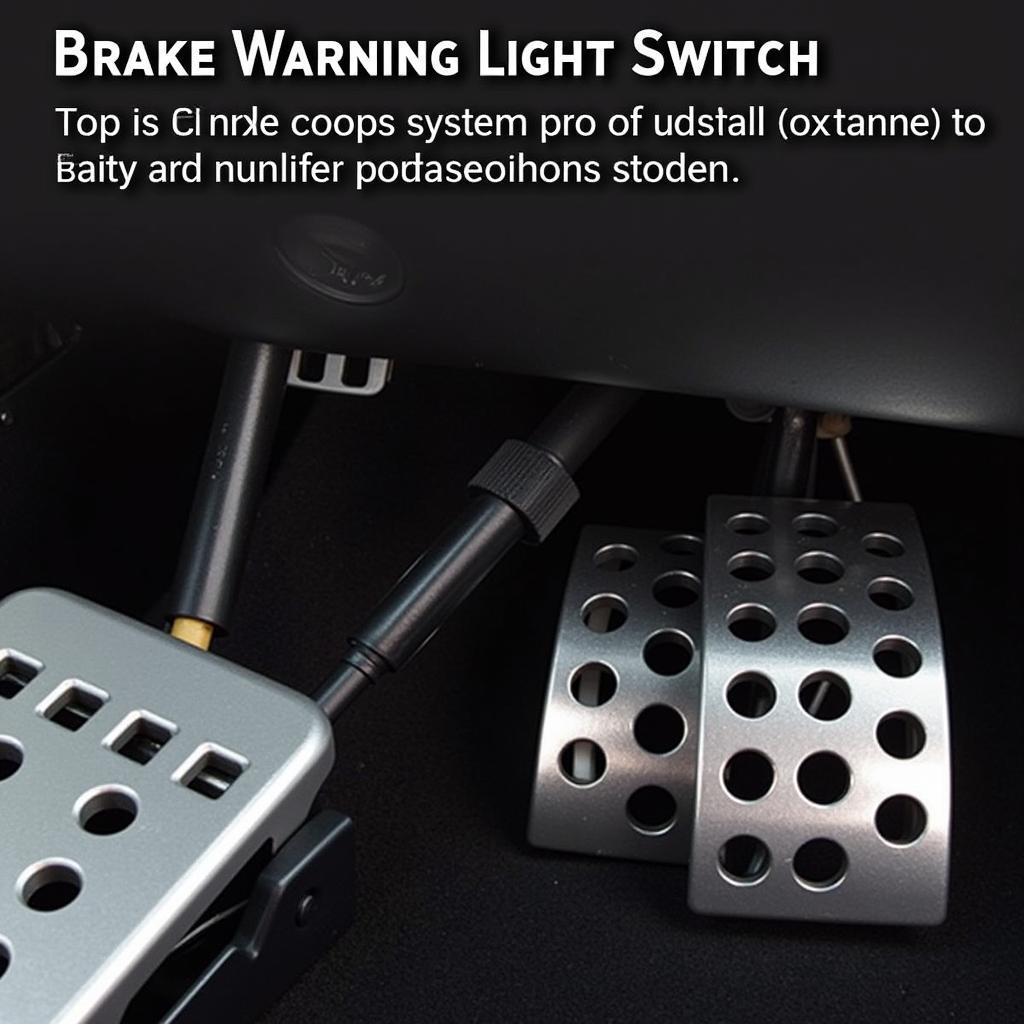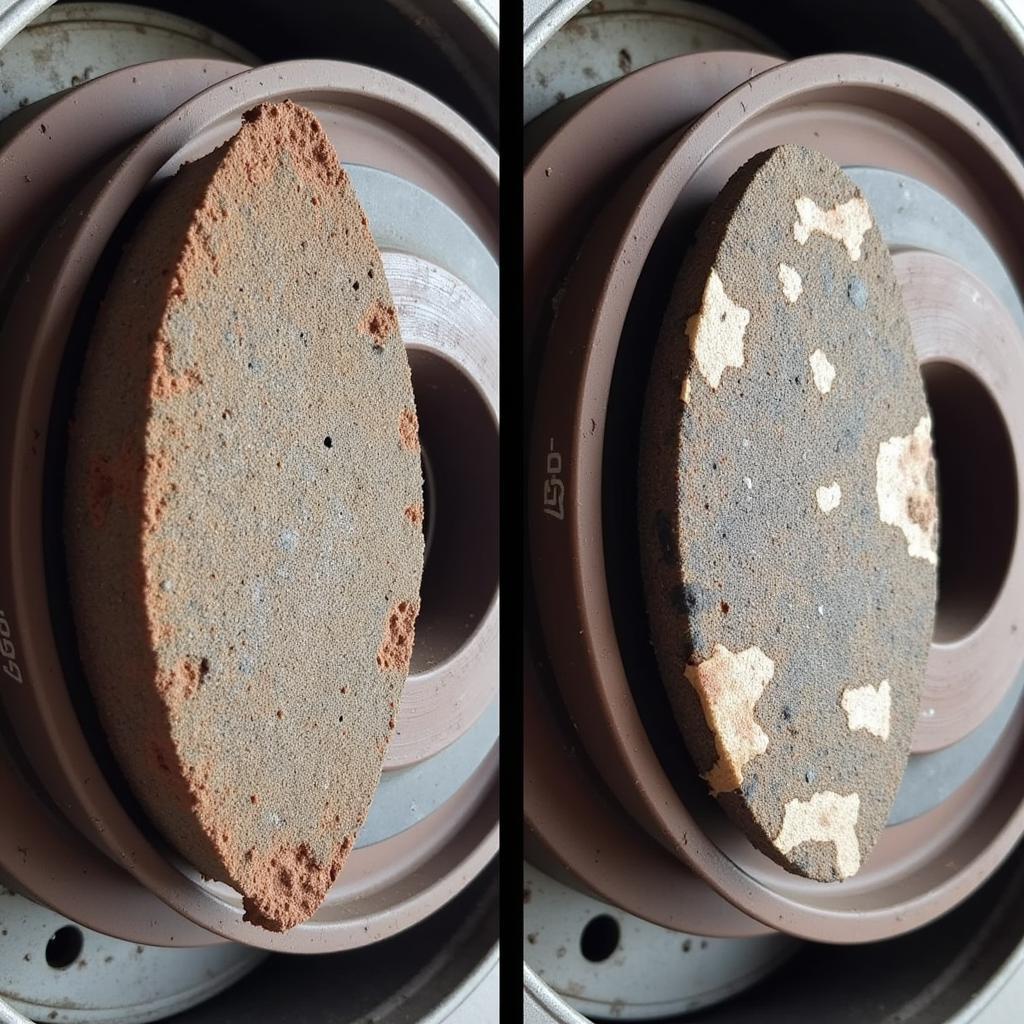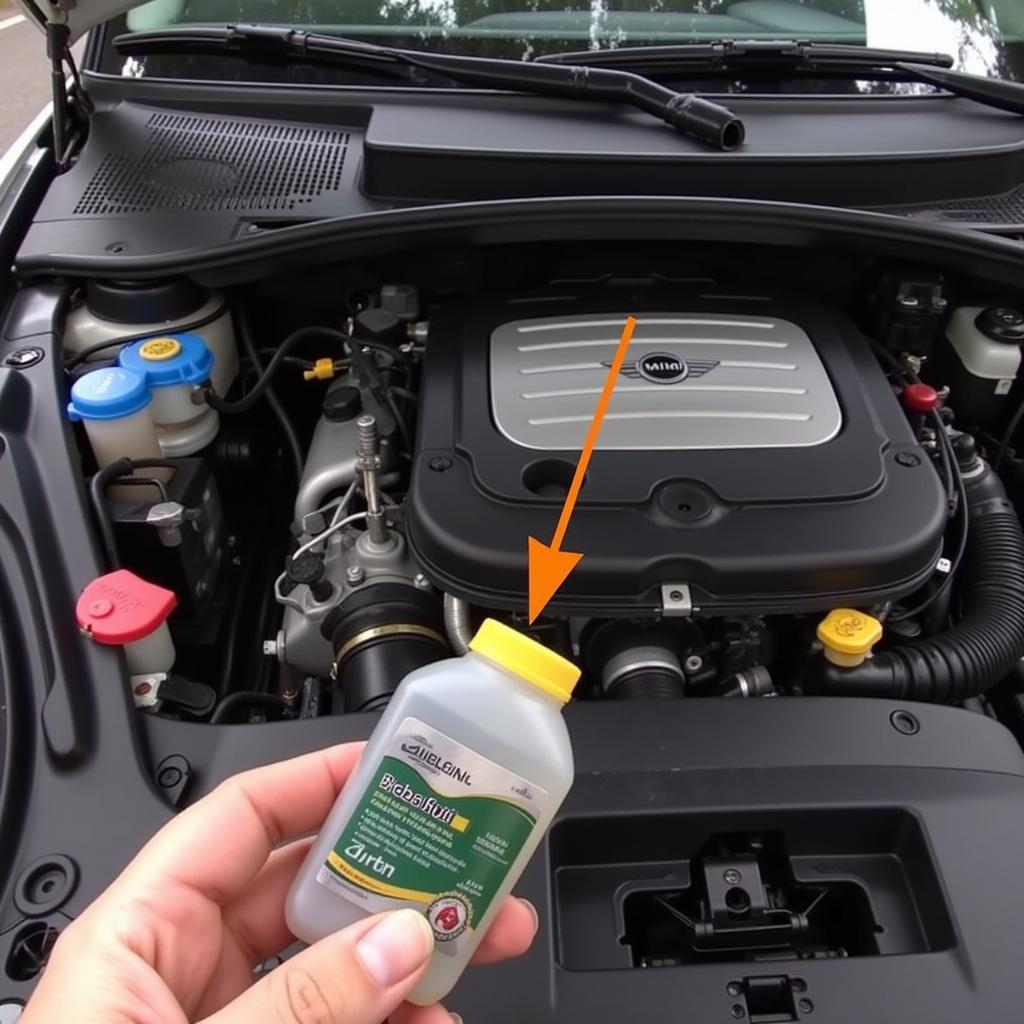The brake warning light on your dashboard is a crucial safety feature. When it illuminates, it signals a potential issue within your braking system, which could range from a simple issue like a disengaged parking brake to a more serious problem with your brake fluid or components like the brake warning light switch. Understanding what triggers this warning light and how to troubleshoot it can be vital for your safety on the road.
Common Reasons Your Brake Warning Light is On
While a glowing brake warning light can be alarming, it’s important to remain calm and understand the potential reasons behind it:
- Engaged Parking Brake: This is the most common and often overlooked reason. Always ensure your parking brake is fully disengaged before driving.
- Low Brake Fluid: Your car needs a sufficient amount of brake fluid to function properly. A leak in the system can cause a drop in fluid levels, triggering the warning light.
- Worn Brake Pads: Brake pads have wear indicators that make a noise when they get too thin. If ignored, this can lead to the warning light illuminating.
- Faulty Brake Warning Light Switch: The switch itself can malfunction, causing the light to stay on or flicker even when there’s no actual problem with the braking system.
The Brake Warning Light Switch: A Closer Look
 Brake Warning Light Switch Location
Brake Warning Light Switch Location
The brake warning light switch is a small but essential component that acts as a pressure sensor. It’s typically located near the brake pedal and connected to the brake fluid reservoir. When you press the brake pedal, pressure builds in the system, releasing the switch and turning off the warning light. If the pressure is insufficient or the switch malfunctions, the light remains on.
Troubleshooting a Brake Warning Light
If your brake warning light comes on, here’s a step-by-step guide to help you troubleshoot the issue:
- Check Your Parking Brake: Ensure the parking brake is fully disengaged.
- Inspect Brake Fluid Level: If the parking brake isn’t the issue, carefully check the brake fluid level in the reservoir.
- Look for Leaks: Visually inspect the brake lines, calipers, and wheel cylinders for any signs of leaks, which often appear as wet spots.
- Consider Brake Pad Wear: Think about when you last had your brake pads replaced. If they’re due for a change, this could be the culprit.
- Test the Brake Warning Light Switch: You can test the switch by disconnecting it and checking for continuity with a multimeter.
“It’s always advisable to consult with a qualified mechanic for diagnosis and repair, especially if you’re not comfortable working on your vehicle’s braking system,” says Mark Williams, Senior Automotive Engineer at Car Mechanics United. “Brakes are critical for your safety, so it’s best to err on the side of caution.”
When to Seek Professional Help
While simple checks can help identify the issue, some problems require the expertise of a trained mechanic. Consider seeking professional help if:
- You notice brake fluid leaks.
- Your brake pedal feels spongy or goes all the way to the floor.
- You hear unusual grinding or squealing noises when braking.
- You experience reduced braking performance or your vehicle pulls to one side when braking.
Preventing Future Brake Warning Light Issues
“Regular maintenance is key to preventing brake problems,” advises Sarah Thompson, Lead Mechanic at AutoCare Pro. “Make sure your car gets routine brake inspections, and don’t ignore any unusual noises or changes in brake pedal feel.”
Here are some preventive measures:
- Adhere to your car’s recommended brake fluid flush schedule.
- Inspect your brake pads regularly and replace them before they wear down completely.
- Address any brake fluid leaks promptly.
- Avoid riding your brakes, especially on long downhill stretches.
- Have your entire braking system inspected annually by a qualified mechanic.
Conclusion
The brake warning light is a crucial safety indicator in your vehicle. Understanding its function and the common reasons behind its illumination can help you address potential issues promptly and ensure safe driving. While some fixes might be simple DIY tasks, never hesitate to seek professional help for a thorough diagnosis and repair, especially if you’re dealing with a complex issue like a faulty warner electric brake clutch china suppliers. Remember, your safety on the road is paramount.
FAQs About Brake Warning Lights
1. Can I still drive my car if the brake warning light is on?
It’s highly discouraged. Driving with a potentially compromised braking system can be extremely dangerous.
2. How much does it cost to replace a brake warning light switch?
The cost varies depending on your car model and labor rates. However, it’s usually a relatively inexpensive repair.
3. How often should I check my brake fluid?
It’s good practice to check your brake fluid level at least once a month and top it off as needed.
4. Do I need to bleed my brakes after adding brake fluid?
Only if you’ve completely drained the system or suspect air in the lines. Otherwise, topping off the fluid shouldn’t require bleeding.
5. How long can I drive with worn brake pads?
This is not advisable. If you suspect your brake pads are worn, have them inspected and replaced immediately.


